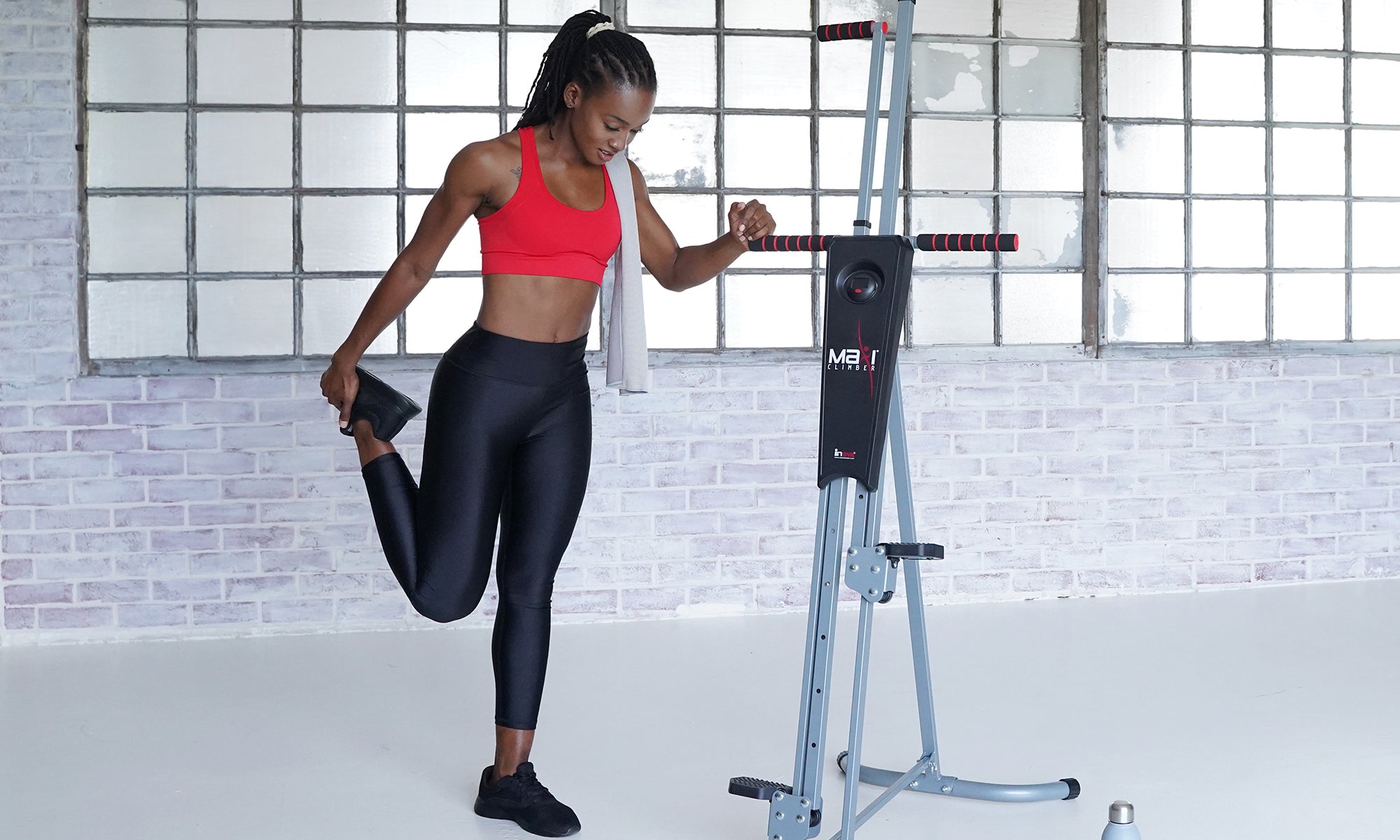If You Work Out, You Need to Know About Lactic Acid
“No pain, no gain” is how the familiar saying goes. If you’re no novice to intense workouts, chances are you are very familiar with this feeling, too. But what really causes that burning sensation in our muscles when we’re going full throttle? Whether pushing through some intense workouts with HIIT exercises or a simple cardio workout at home, you may be experiencing an uncomfortable burn. This feeling may be the result of lactic acid buildup in your body.What is Lactic Acid?

Lactic acid, also known as lactate in the science community, is a byproduct left in your muscles and blood after intense workouts. It has long been assumed that lactic acid causes muscle soreness, but research now suggests that’s not true. The feeling lactic acid does produce is probably the burning sensation your muscles feel during intense workouts, but not the pain that follows. Delayed-onset muscle soreness or “DOMS” is now what scientists focus on when looking at pain, and according to them, the culprit is quite possibly the micro muscle tears continually produced during intense workouts to build more muscle. The long-blamed lactic acid has finally had its name cleared in that area.
Is Lactic Acid a Bad Thing?

Lactic acid isn’t actually dangerous, although it can be uncomfortable for many athletes who are trying to push their limits and increase the magnitude of their intense workouts. In fact, if you ever do experience severe pain in your limbs during or after a workout that can’t be readily alleviated, it is time to see a doctor ASAP. Lactic acid can be processed in a healthy individual typically through the body as soon as the intense workout ends and rest begins. And instead of doing what was initially thought by scientists, research has now found that lactic acid doesn’t build up in the muscles at all. Instead, it’s an additional fuel source that’ll be cycled through the body to be used later.
How to Manage Lactic Acid Buildup During your Workout
Still, if you want to push through the burning sensation you feel in your muscles so you can accomplish more with your workouts, we are here for you! That’s why we have these tips on how to manage your lactic acid buildup so when you feel the burn, you can still enjoy your full-body workout.Take Breaks

The most important thing you can do is probably the most counter-intuitive: rest. That’s right! Letting your body take regular breaks during your intense workouts will help your body process your lactic acid easier. "Once you stop exercising at such a high intensity, your body starts breaking down the lactic acid pretty quickly," Audrey Stone, Ph.D., an assistant professor in the Department of Kinesiology and Health Education at the University of Texas, said in an interview with Insider.com. The reason this works back to that anaerobic vs. aerobic process. If you’ve reached the point where your intense workout is causing rapid breathing and muscle soreness, it’s probably a sign your body needs you to slow down. This is why we’re a huge fan of HIIT exercises with the MaxiClimber. Doing short bursts of intense workouts gives you all the benefits without running the risk of overly uncomfortable exhaustion. Simply do a set number of reps or clock yourself for a certain amount of time (like two to five minutes) and then engage in activity recovery by slowing down your speed an intensity long enough to catch your breath before going full throttle again for another two to five minutes. Taking a break isn’t a sign of weakness. In fact, it can be your secret weapon to pushing yourself further and revving up your metabolic process.
Hydrate, Hydrate, Hydrate!

Drinking water is always a good idea, but science says it can also make a difference in how your body processes lactic acid during intense workouts. Of course, downing a glass of good, ol’ H2O will have its many benefits for any athlete, but are all kinds of water created equal? Recent studies seem to suggest otherwise. One study tested the effect of alkaline mineral water on athletes and found that it significantly increased their ability to perform anaerobic exercises longer. Not only that, but this specific kind of water improved overall hydration and improved body pH. “Considering the energy demands and the intense sweat rate of combat sports athletes, the authors recommend the daily intake of 3–4 L of highly alkaline mineralized water to improve hydration and anaerobic performance during training and competition,” the report said in its conclusion.
Exercise More Often

While taking breaks is important like we’ve already discussed, engaging in anaerobic exercise more often can train your body to handle lactic acid production within your body more efficiently. The researchers of this study from the University of California, Berkeley inferred that HIIT exercises are the best way for your body to improve its ability to train your muscles to process lactic acid better. HIIT exercises provide the benefits of intense workouts while also offering the ability to incorporate adequate resting time. This way, you can still push through to complete more reps over time in the long run. And since HIIT exercises can often be shorter sessions ranging anywhere from 10 to 20 minutes, you can log multiple intense workouts a week on your MaxiClimber, in addition to your other favorite kinds like yoga, running, swimming and more.
Breathe In. Breathe Out.

Since lactic acid is literally the byproduct of anaerobic exercise, another way to minimize its burn is to become more aware of your breathing. Whether you’re incorporating breathing techniques during your intense workouts or focusing on your breathing rate during your scheduled breaks, the key is to give your oxygen intake the attention it deserves. One 1994 st udy found that athletes who practiced breathing exercises increased their physical performance and significantly decreased the levels of lactic acid in their bloodstream. Breathing techniques like box breathing can dramatically help you improve your focus on your body’s oxygen intake. Here’s how to do it:
- Breathe in for four seconds.
- Hold your breath for four seconds.
- Exhale for four seconds.
- Hold your breath for four seconds.
- Repeat.
MaxiClimber Can Help You Combat Lactic Acid Burn

While the MaxiClimber provides one of the most intense workouts you can find when searching for the optimum cardio workout at home, it is also a great way to achieve your goals without neglecting your body and its lactic acid. It is the best home gym equipment to use for HIIT exercises as it can easily incorporate into any circuit-style since you don’t need to spend a long time on your MaxiClimber to start seeing results fast. Say hello to a healthy lifestyle where you listen to your whole body’s needs. Listen to your cues, incorporate rest and when you want an intense workout, hop on your MaxiClimber to get the most out of your HIIT exercises. You’ll be processing lactic acid more efficiently in no time. Click here to learn more about how MaxiClimber can fit into your workout schedule and improve your overall health.













Share: